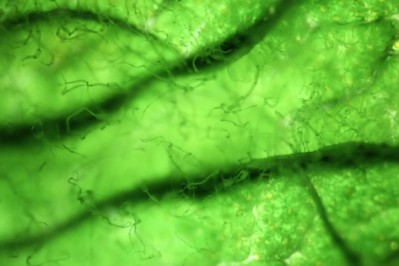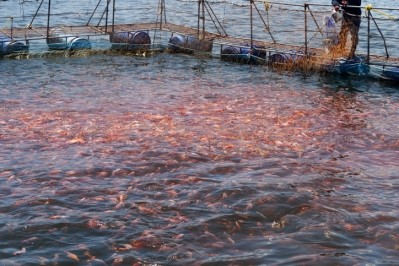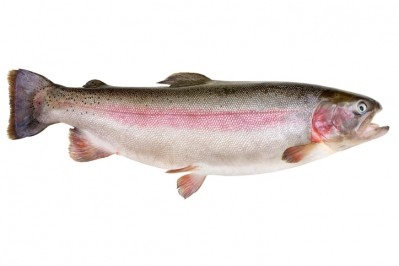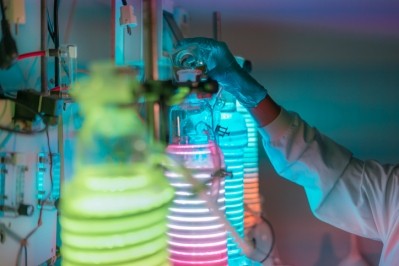DHA feed supplement may boost cold-water tilapia production
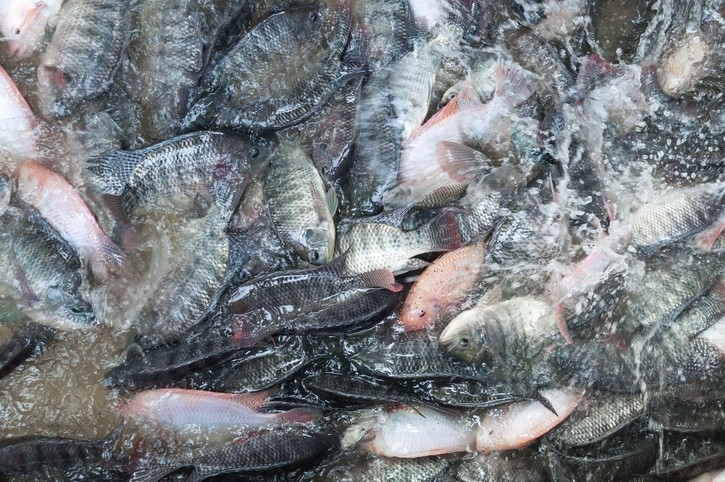
We spoke to Alltech Young Scientist regional finalist for Latin America, graduate student Renata Oselame Nobrega during One: the Alltech ideas conference to hear more about her research exploring efforts to improve the production of tilapia during low-temperature periods.
The annual competition for agri-science students is in its 14 year and has attracted entrants from 120 universities in 40 countries. In the final, which took place during the One conference earlier this week, four graduate students from different regions competed for a $10,000 prize.
The competition was a great opportunity, said Nobrega, who is, currently, finishing her PhD work in aquaculture at the Federal University of Santa Catarina in Brazil.
During the competition, she presented on research done a examining the use of an alternative DHA source – Aurantiochytrium sp. meal – in the diets of Nile tilapia exposed to cold temperatures. The study sought to find if adding the additional DHA to the diet would alter fish growth and the muscle fatty acid concentration.
Details about the project also were published in the journal, Aquaculture
“Our study showed that at a suboptimal cold temperature, Nile tilapia growth and feed efficiency were improved when fish was fed diets containing n-3 fatty acids,” said Nobrega.
“Supplementation of Aurantiochytrium sp. meal in the range of 0.45% to 1.42% was best for growth, feed efficiency, protein retention, body lipid composition, and n-3/n-6 PUFA ratio in the muscle of tilapia,” she added.
Research project overview
Cold or suboptimal temperatures have been identified as a challenge for tilapia production, said Nobrega. The species is a tropical fish and grows best in water at about 28°C (82°F).
When fish experience colder temperatures during production, feed consumption drops and there is a decrease in growth compared to fish in warmer production systems, she said.
“Changes in ambient temperature affects dietary requirements in fatty acids on ectothermic animals such as fish,” she said. “To maintain their physiological function in cold unfavorable temperatures, fish increase the fatty acid unsaturation levels of the phospholipids that make up their cell membranes.”
Previous research found that tilapia growth and feed efficiency in cold temperature production could be improved when given diets high in fish oil, the researchers said in the paper. Tilapia’s dietary needs for alpha-linolenic acid increased in colder temperatures.
However, more information is needed about fatty acid nutritional requirements for tilapia facing periods of cold as a way to improve productivity along with maintaining or boosting fish health, said Nobrega.
“Aurantiochytrium sp. is a heterotrophic microorganism found in marine habitat, which [has] a high amount of the n-3 long-chain polyunsaturated fatty acid (LC-PUFA) known as docosahexaenoic acid (22: 6 n-3, DHA),” she said.
Use of the additive in tilapia and orange-spotted grouper diets previously was not found to hinder growth at optimal temperatures.
The meal was of interest because it provides DHA and could be an alternative to the use of fish oil, she said. The availability of fishmeal and fish oil along with the interest in those ingredients has generated a demand for alternative sources of n-3 long-chain polyunsaturated fatty acids (LC-PUFA).
Feed trial details
During the feeding trial, juvenile tilapia received one of six diets for an 87-day period, the researchers said in the paper. Fish were raised at suboptimal temperature.
The diets included five levels of Aurantiochytrium sp. meal at 0, 0.5, 1, 2 or 4g 100g-1 dry diet, they said. A positive control diet also was designed using cod liver oil (CLO) to provide a similar DHA level to that in the 1g 100g-1 Aurantiochytrium sp. meal diet.
Fish were measured at the start and end of the trial to check total body length and weighed at the start, end and ever 30 days to check growth, they said. Daily weight gain, specific growth rate, feed efficiency, daily feed intake and apparent net protein retention were calculated.
Sample fish were harvested at the start and end of the trial to check whole-body proximate composition, muscle proximate competition and perform a fatty acid analysis, they said.
Results and looking forward
Increasing the amounts of the Aurantiochytrium sp. meal in the diet altered fish growth, feed efficiency, protein retention and DHA content, the researchers said. Fish gained the most weight on the 1g and the 4g 100g-1 diets.
The feed supplement also improved the n-3 fatty acid profile found in fish muscle, they said. But, fish on the CLO diet collected more DHA than those on the 1g 100g-1 Aurantiochytrium sp. meal diet.
However, there was a surprise in the data generated, said Nobrega. “Fish fed 1% Aurantiochytrium meal had significantly higher growth, feed efficiency, and protein retention than fish fed a diet supplemented with a similar amount of DHA, but from cod liver oil,” she added.
“Dietary supplementation of Aurantiochytrium sp. meal promoted 5.31% more growth than cod liver oil supplementation,” she said. “I expected that fish fed cod liver oil diet significantly higher or at least similar.”
“The supplementation of Aurantiochytrium sp. meal can be an interesting alternative in winter diets for Nile Tilapia,” Nobrega said of what the implications from the research might mean for producers. “Of course, field studies are necessary to validate our results and to calculate the costs of tilapia production using the Aurantiochytrium sp. meal as a supplement in aquafeeds.”
Going forward, the next step for the research will be to test the use of the supplement at a larger production in a subtropical region, like southern Brazil, which experiences temperature fluctuations throughout the year, she said. “I intend to test two diets with the same total PUFA but one diet with only n-6 PUFA (similar to a current Nile tilapia commercial diet) and another diet containing n-6 plus n-3 PUFA (such as 18:3 n-3 α-LNA or DHA),” she added.
Source: Aquaculture
Title: Dietary supplementation of Aurantiochytrium sp. meal, a docosahexaenoic-acid source, promotes growth of Nile tilapia at a suboptimal low temperature
Authors: R. Oselame Nobrega, R. Batista, C. Corrêa, B. Mattioni, K. Filer, J. Pettigrew, D. Fracalossi
DOI: https://doi.org/10.1016/j.aquaculture.2019.04.030
